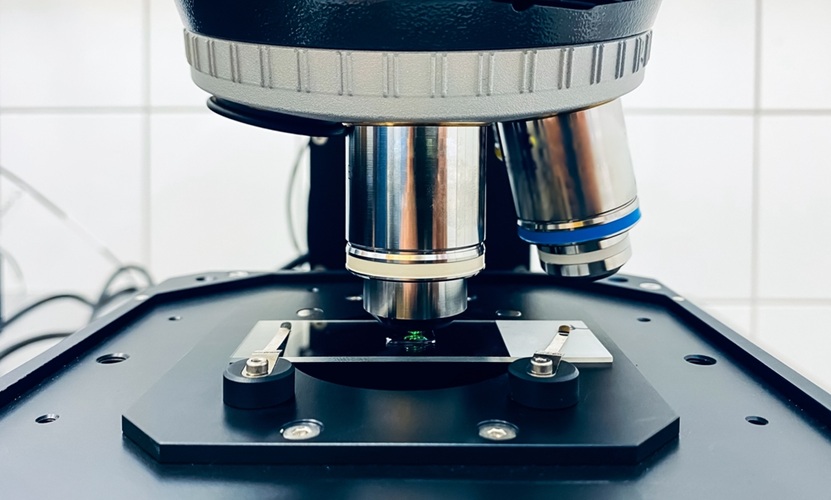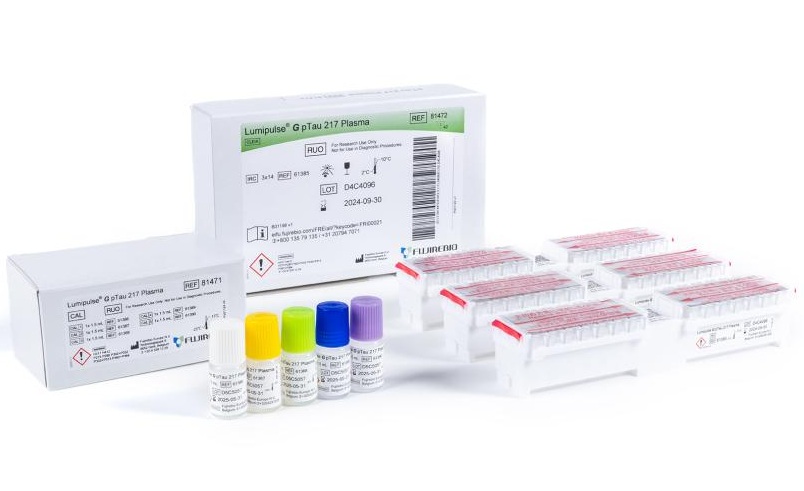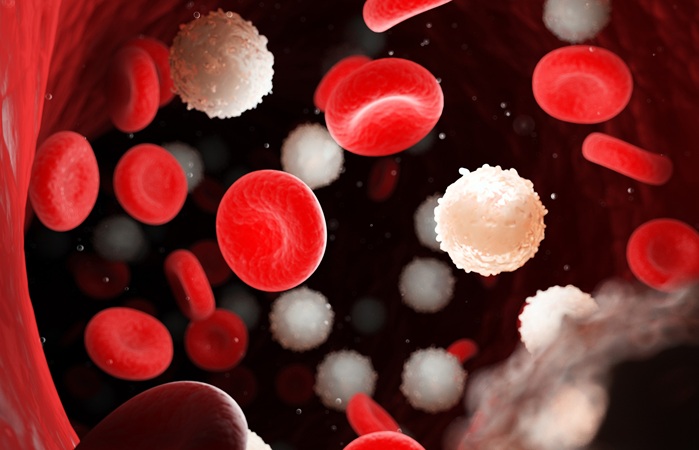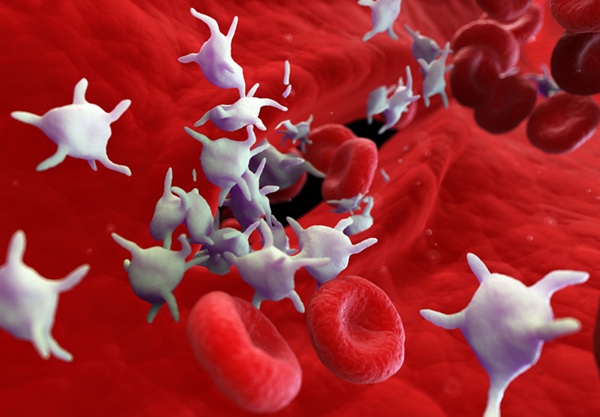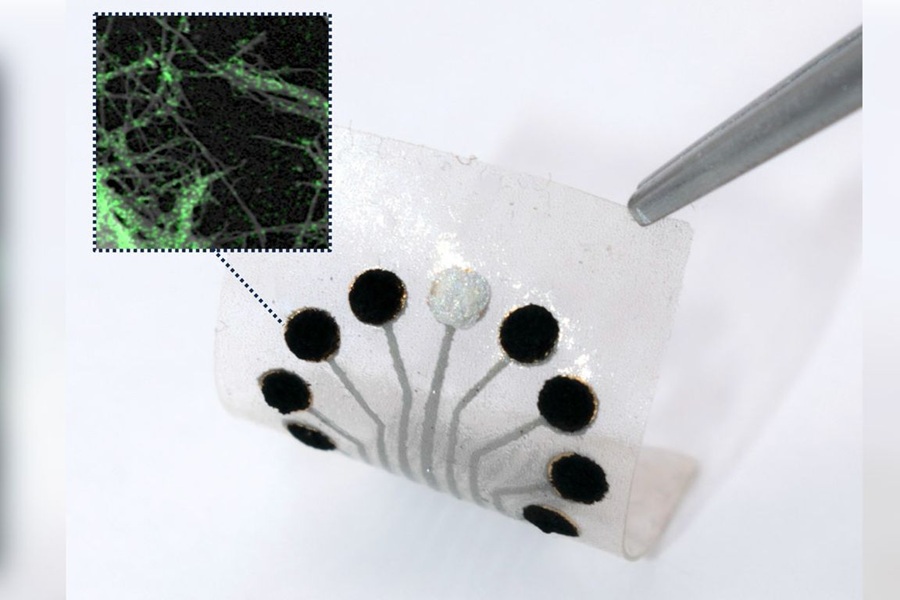Single-Cell Proteomics of Localized Prostate Cancer Defines Disease Heterogeneity
|
By LabMedica International staff writers Posted on 26 Apr 2022 |
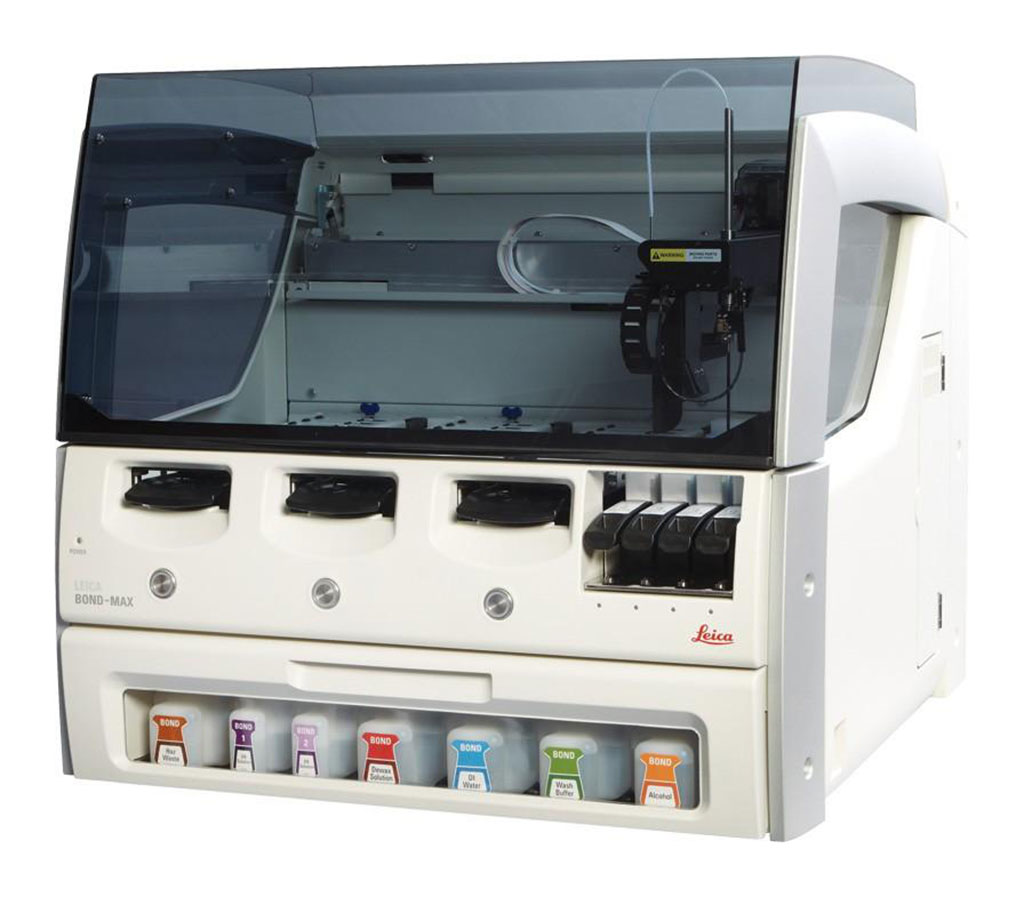
Prostate cancer affects about 12.6% of men over the course of their lives, and while most individuals with localized disease can be cured, disease does recur in a small number of patients. The treatment of localized prostate cancer is based on clinicopathological information including Gleason score, prostate-specific antigen (PSA) levels, stage, and patient age.
Several potential biomarkers including gene fusions, mutations, epigenetic heterogeneity, and proteins have been studied. Technological advances in proteomics now allow both exploration of the proteome for biomarkers and assessment of the heterogeneity of biomarker expression. However, analysis of a whole tissue core misses important cell-to-cell variability.
An international team of clinical scientists collaborating with the University of Zürich (Zürich, Switzerland) collected samples from a cohort of 58 prostate cancer patients that included 24 patients with grade II disease, 22 with grade III, and 12 with grade V disease. For 17 patients, they also collected and analyzed adjacent benign prostatic tissue. The single-cell mass cytometry analysis they used relied on a panel of 36 metal-tagged antibodies that recognized surface markers, enzymes, transcription factors, and markers of functional readouts. In all, they analyzed more than 1.67 million cells.
For the dissociation of tissues to single cells, the tissue was minced using surgical scalpels and further disintegrated using the Tumor Dissociation Kit, human)and the gentleMACS Dissociator (Miltenyi Biotech, Bergisch Gladbach, Germany). The team also performed mass cytometry barcoding, antibodies and antibody labeling, antibody staining and mass cytometry data collection and data were acquired on an upgraded Helios CyTOF 2 mass cytometer (Fluidigm, South San Francisco, CA, USA). Automated platforms were used for in situ protein expression analyses of CD15, and CD3 (Leica Bond-Max, LeicaBiosystems, Deer Park, IL, USA).
The investigators fed their data into the Franken computational pipeline, an unsupervised, single-cell clustering approach they developed. Franken identified 55 different cell clusters, which the team organized in a set of 33 metaclusters, consisting of 14 epithelial, 16 immune, one stromal, and one endothelial cell clusters as well as a cluster lacking most markers in the panel. This set, they said, reflects the main cell-type compartments in the prostate. Luminal cells, for instance, were the most abundant cell type, followed by T cells.
There was, the scientists noted, overlap in the cell phenotypes found among tumor and associated benign tissue, though they diverged in their immune landscape and in rare phenotypes present. Two T cell clusters, dubbed TC03 and TC04, representing apoptotic and proliferating T cells, respectively, were enriched among tumor samples, as were two macrophage clusters. They additionally noted that two phenotypes enriched in high-grade patients express CD15, which is involved in cell adhesion and migration and has been implicated in other tumor types as having stem-like potential, suggesting it could be a marker of aggressive disease.
The authors concluded that they had found that tumor and non-tumor regions differed in rare cell types. This made it difficult to employ bulk RNA sequencing in survival analysis as well. Furthermore, they discovered a rare proliferating macrophage and T cell subpopulations as well as an uncommon CD15+ cell type that was enriched in tumor and advanced disease. The study was published on April 19, 2022 in the journal Cell Reports Medicine.
Related Links:
University of Zürich
Miltenyi Biotech
Fluidigm
LeicaBiosystems
Latest Immunology News
- Stem Cell Test Predicts Treatment Outcome for Patients with Platinum-Resistant Ovarian Cancer
- Machine Learning-Enabled Blood Test Predicts Immunotherapy Response in Lymphoma Patients
- Post-Treatment Blood Test Could Inform Future Cancer Therapy Decisions
- Cerebrospinal Fluid Test Predicts Dangerous Side Effect of Cancer Treatment
- New Test Measures Preterm Infant Immunity Using Only Two Drops of Blood
- Simple Blood Test Could Help Choose Better Treatments for Patients with Recurrent Endometrial Cancer
- Novel Analytical Method Tracks Progression of Autoimmune Diseases
- 3D Bioprinted Gastric Cancer Model Uses Patient-Derived Tissue Fragments to Predict Drug Response
- Blood Test for Fungal Infections Could End Invasive Tissue Biopsies
- Cutting-Edge Microscopy Technology Enables Tailored Rheumatology Therapies
- New Discovery in Blood Immune Cells Paves Way for Parkinson's Disease Diagnostic Test
- AI Tool Uses Routine Blood Tests to Predict Immunotherapy Response for Various Cancers
- Blood Test Can Predict How Long Vaccine Immunity Will Last
- Microfluidic Chip-Based Device to Measure Viral Immunity
Channels
Clinical Chemistry
view channel
New Method Uses Pulsed Infrared Light to Find Cancer's 'Fingerprints' In Blood Plasma
Cancer diagnoses have traditionally relied on invasive or time-consuming procedures like tissue biopsies. Now, new research published in ACS Central Science introduces a method that utilizes pulsed infrared... Read more
Carbon Nanotubes Help Build Highly Accurate Sensors for Continuous Health Monitoring
Current sensors can measure various health indicators, such as blood glucose levels, in the body. However, there is a need to develop more accurate and sensitive sensor materials that can detect lower... Read moreMolecular Diagnostics
view channel
Gene-Based Blood Test Accurately Predicts Tumor Recurrence of Advanced Skin Cancer
Melanoma, an aggressive form of skin cancer, becomes extremely difficult to treat once it spreads to other parts of the body. For patients with metastatic melanoma tumors that cannot be surgically removed... Read more
Blood Test Could Identify Patients at Risk for Severe Scleroderma
Systemic sclerosis, also known as scleroderma, causes the hardening of the skin and connective tissues. In many cases, the disease can also damage vital organs, including the heart, kidneys, lungs, and... Read moreHematology
view channel
New Scoring System Predicts Risk of Developing Cancer from Common Blood Disorder
Clonal cytopenia of undetermined significance (CCUS) is a blood disorder commonly found in older adults, characterized by mutations in blood cells and a low blood count, but without any obvious cause or... Read more
Non-Invasive Prenatal Test for Fetal RhD Status Demonstrates 100% Accuracy
In the United States, approximately 15% of pregnant individuals are RhD-negative. However, in about 40% of these cases, the fetus is also RhD-negative, making the administration of RhoGAM unnecessary.... Read moreImmunology
view channel
Stem Cell Test Predicts Treatment Outcome for Patients with Platinum-Resistant Ovarian Cancer
Epithelial ovarian cancer frequently responds to chemotherapy initially, but eventually, the tumor develops resistance to the therapy, leading to regrowth. This resistance is partially due to the activation... Read more
Machine Learning-Enabled Blood Test Predicts Immunotherapy Response in Lymphoma Patients
Chimeric antigen receptor (CAR) T-cell therapy has emerged as one of the most promising recent developments in the treatment of blood cancers. However, over half of non-Hodgkin lymphoma (NHL) patients... Read moreMicrobiology
view channel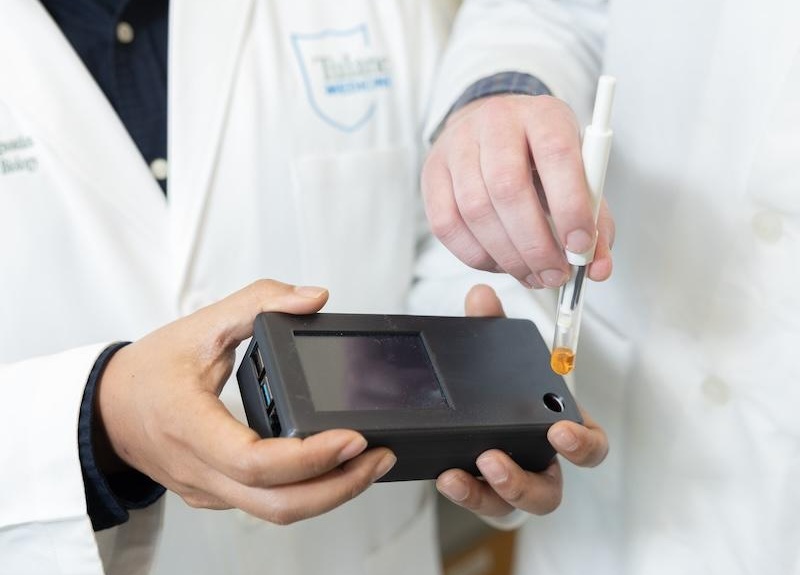
Handheld Device Delivers Low-Cost TB Results in Less Than One Hour
Tuberculosis (TB) remains the deadliest infectious disease globally, affecting an estimated 10 million people annually. In 2021, about 4.2 million TB cases went undiagnosed or unreported, mainly due to... Read more
New AI-Based Method Improves Diagnosis of Drug-Resistant Infections
Drug-resistant infections, particularly those caused by deadly bacteria like tuberculosis and staphylococcus, are rapidly emerging as a global health emergency. These infections are more difficult to treat,... Read more
Breakthrough Diagnostic Technology Identifies Bacterial Infections with Almost 100% Accuracy within Three Hours
Rapid and precise identification of pathogenic microbes in patient samples is essential for the effective treatment of acute infectious diseases, such as sepsis. The fluorescence in situ hybridization... Read moreTechnology
view channel
Pain-On-A-Chip Microfluidic Device Determines Types of Chronic Pain from Blood Samples
Chronic pain is a widespread condition that remains difficult to manage, and existing clinical methods for its treatment rely largely on self-reporting, which can be subjective and especially problematic... Read more
Innovative, Label-Free Ratiometric Fluorosensor Enables More Sensitive Viral RNA Detection
Viruses present a major global health risk, as demonstrated by recent pandemics, making early detection and identification essential for preventing new outbreaks. While traditional detection methods are... Read moreIndustry
view channel
Cepheid and Oxford Nanopore Technologies Partner on Advancing Automated Sequencing-Based Solutions
Cepheid (Sunnyvale, CA, USA), a leading molecular diagnostics company, and Oxford Nanopore Technologies (Oxford, UK), the company behind a new generation of sequencing-based molecular analysis technologies,... Read more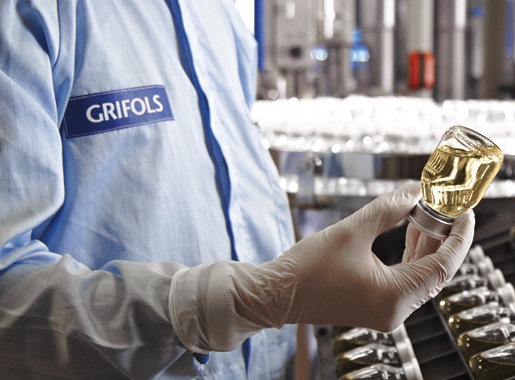
Grifols and Tecan’s IBL Collaborate on Advanced Biomarker Panels
Grifols (Barcelona, Spain), one of the world’s leading producers of plasma-derived medicines and innovative diagnostic solutions, is expanding its offer in clinical diagnostics through a strategic partnership... Read more









.jpg)


